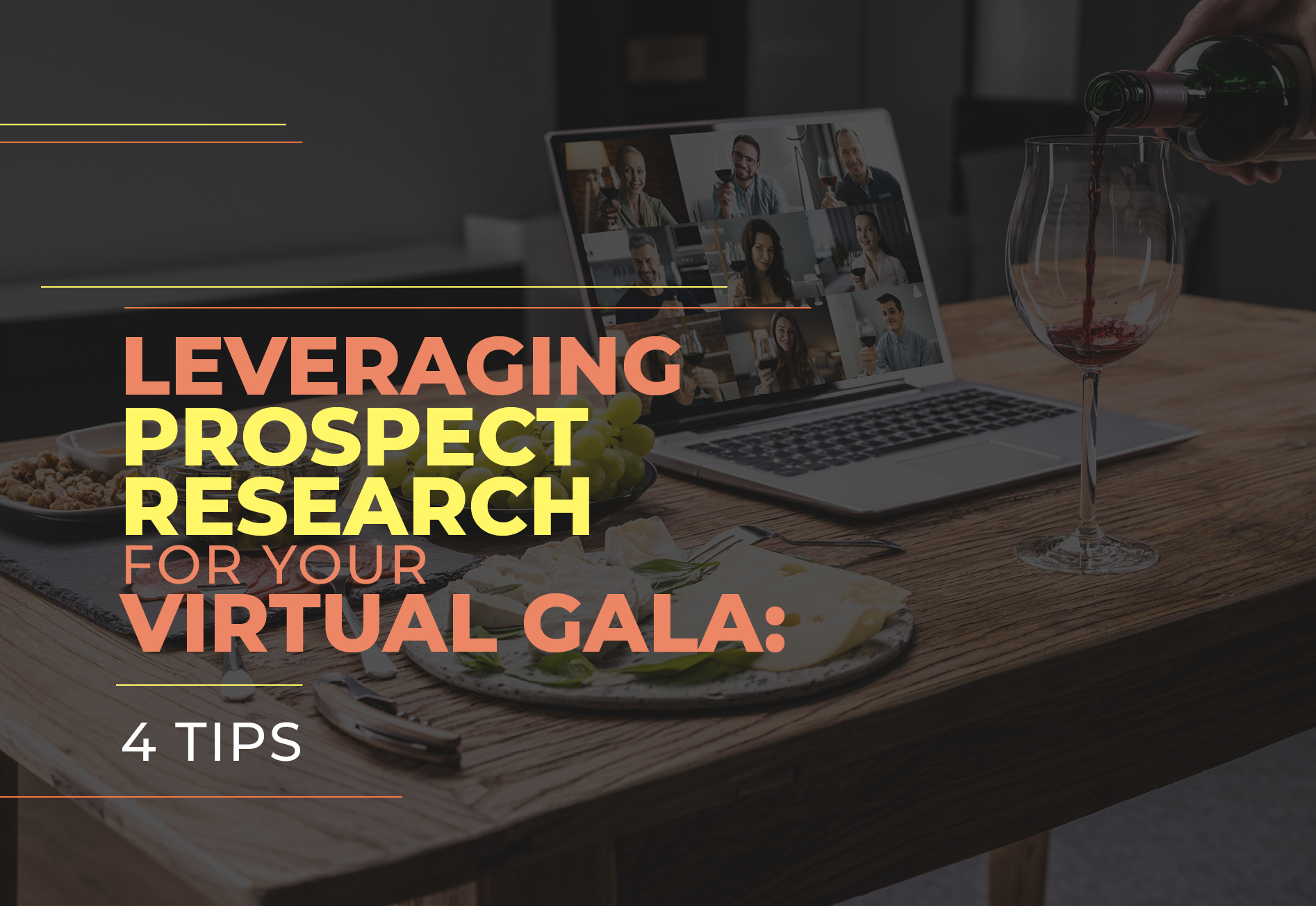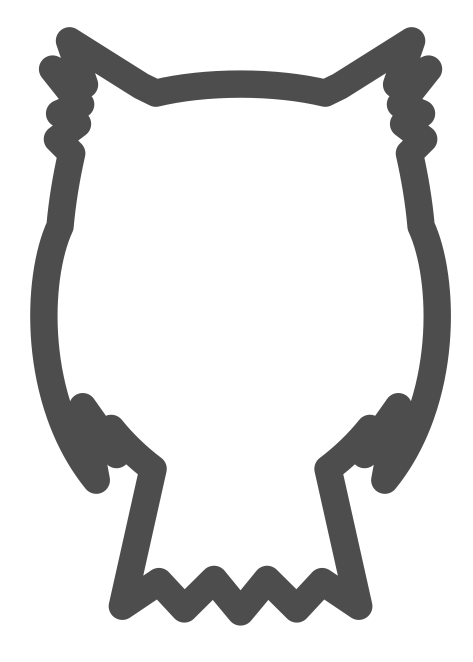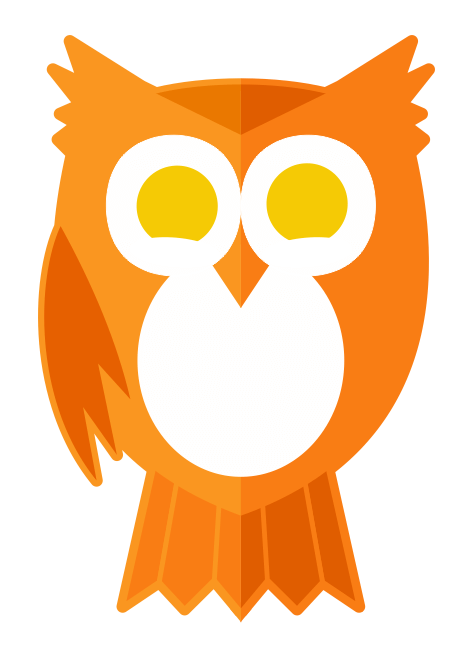Leveraging Prospect Research for Your Virtual Gala: 4 Tips
The COVID-19 pandemic gave nonprofits an opportunity to explore new ways of engaging donors—most notably, through virtual events such as galas. And now that the pandemic has subsided, nonprofits are still using these events to connect with donors in convenient ways and pull in funding while saving on overhead costs.
As a fundraising professional, you may be interested in hosting your own virtual gala to raise money for your school or nonprofit organization. Perhaps you’ve invested in a virtual gala platform to livestream your event, facilitate a live chat, and engage participants in an exciting bidding process.
However, before you can host a successful gala, you need to get attendees on board who are excited and willing to participate, as well as those who can contribute major gifts. That’s where thorough prospect research comes in!
According to Donorly, prospect research, also known as prospecting or donor research, is the process of “identifying potential donors for your nonprofit, helping you take a more focused approach to secure major gifts, capital campaign contributions, planned gifts, and more.”
For virtual galas, you can use prospect research to:
- Identify prospective major donors.
- Reach out using supporters’ preferred communication channels.
- Remind supporters of matching gift opportunities.
- Conduct targeted stewardship efforts.
If your school or organization has a comprehensive, up-to-date database of supporter information, you’ll be in a great spot to launch your prospecting efforts. Prospect research will help you plan your virtual gala much more intentionally by giving you a better idea of who to personally invite to the event and how to steward them toward making a large donation. Let’s begin.
1. Identify prospective major donors.
When it comes to your annual gala, your main goal is likely to engage and continue building relationships with your major donors and prospects. You can use the event to learn more about them, provide a fun night of fundraising activities, and ensure your organization remains top of mind.
Prospect research assists in this process by helping you identify potential donors who exhibit an affinity for your specific cause, a propensity for giving to charitable organizations, and the financial capacity to make a large contribution.
Working with an experienced prospect research consultant, you can use your donor data and prospect research tools to identify these major donor markers:
- Affinity markers:
- Political affiliations and donations
- Past involvement or donation history with your organization or similar organizations
- Connections to individuals in your database
- Values or interests that align with your cause
- Propensity markers:
- Nonprofit board or advisory committee service
- Fundraising event attendance
- Capacity markers:
- Real estate ownership
- Stock holdings
- Business ownership or connections
When you identify an individual that exhibits all three types of markers, you can be confident you’ve found a potential major donor.
Then, you can use this background information to craft personalized event invites to prospective donors, as well as donors who you’re already stewarding. Note that you won’t be conducting cold outreach to prospects you’ve never met before—you’ll be able to leverage existing connections with prospects to conduct a natural outreach and event invitation process. You can also use your research to plan out talking points for your interactions with donors during the event.
2. Reach out using supporters’ preferred communication channels.
Since you’ll be asking prospective major donors to contribute a heftier donation, you’ll need to devote more time and effort to building relationships with them and securing their support. Prospect research can connect you with accurate personal information for potential major donors so you can reach out in the right ways.
For instance, you can use prospect research to segment your donors based on their preferred communication channels. Let’s say you have a group of younger donors who mainly prefer digital communications, while an older audience of prospects might prefer phone calls or direct mail.
By implementing donor segmentation techniques, you can group supporters based on these shared interests and send more tailored messages to each group. This means you’ll send each group the relevant information in a more thoughtful way, increasing their likelihood to engage with it.
Using segmentation, along with donors’ preferred communication platforms, you can personalize your messages and ensure they’re on theme, which will help to point recipients toward the desired actions for your specific event.
For example, you can include a link to the gala registration page or a QR code leading to your online donation form. This is an effective way to ensure you’re respecting donors’ preferences and their capacity to give while garnering much-needed support for your gala.
3. Remind supporters of matching gift opportunities.
If you have access to a comprehensive donor database, you’ll be able to determine more than just donors’ affinity, propensity, and capacity markers. You can use prospect research data to identify prospective donors who are eligible for employee matching gift programs.
Through a matching gift program, employers financially match employees’ donations to eligible nonprofit organizations. These programs empower your donors to maximize the impact of their gifts without spending more. For example, if a donor gives $50 and their employer matches gifts at a 1:1 ratio, your nonprofit would receive $100 in total!
Use your donor database to identify prospective donors who work for companies that offer matching gift programs. Then, craft targeted messages to encourage these supporters to contribute to your virtual gala and get their gifts matched. Most matching gift requests take just a few minutes to complete, and some matching gift tool providers even offer auto-submission capabilities to make the process easier.
4. Conduct targeted stewardship efforts.
When you use prospect research to guide your donor acquisition process, you gain access to donors who are more likely to stay involved with your organization. This is because prospect research opens doors to donors with a proven track record of helping causes similar to yours.
However, even if a gala attendee has a proven affinity for your cause, that doesn’t mean they’ll automatically stay engaged with your organization over the long term. You must continue to actively develop and sustain relationships with supporters long after the gala ends, also known as stewarding.
In particular, you can use the data you’ve collected through your research to:
- Provide opportunities for supporters to give feedback. Supporters are more likely to stay engaged with your organization if they know that you care about their opinions. Reach out to see what your donors thought of your recent gala promotional video or what they’d like to see added to your online event store—you can ask for feedback on nearly anything you’re looking to improve!
- Offer supporters more ways to get involved. Invite prospects and donors to get involved in other ways besides just donating. For example, send them an invitation to sign up for your newsletter or participate in a volunteer event. This shows that you value your donors for more than just their wallets.
- Express appreciation using supporters’ preferred communication channels. You can use these channels to send frequent personalized thank-you messages. According to FundraisingLetters, it’s best practice to address the donor by name and include a signature from a real person at your organization.
Continue these outreach strategies even after your virtual gala ends to keep donors engaged in all your activities. With this approach, you’ll help ensure your donors will stick around for longer than just a one-time contribution.
As you plan your next virtual gala, amid designing your auction and planning out your program, ensure that you take the opportunity to get to know your donors and prospects better through diligent prospect research. As you do so, you’ll be more equipped to effectively connect with them before, during, and after your big event!
Remember, a consultant can be a great help in your prospecting efforts and can provide you with guidance in other areas of your fundraising work. May your upcoming gala be a success!

















